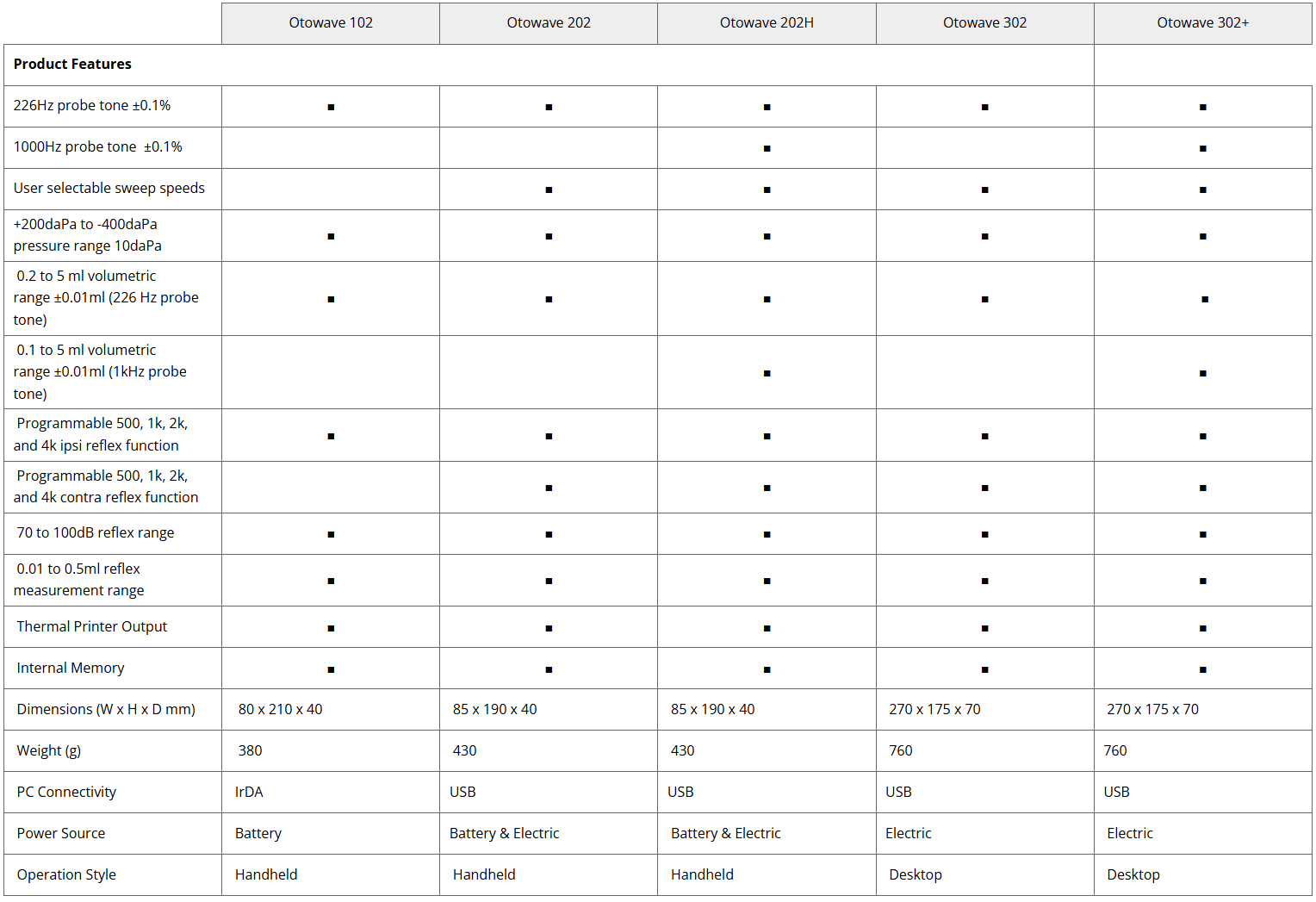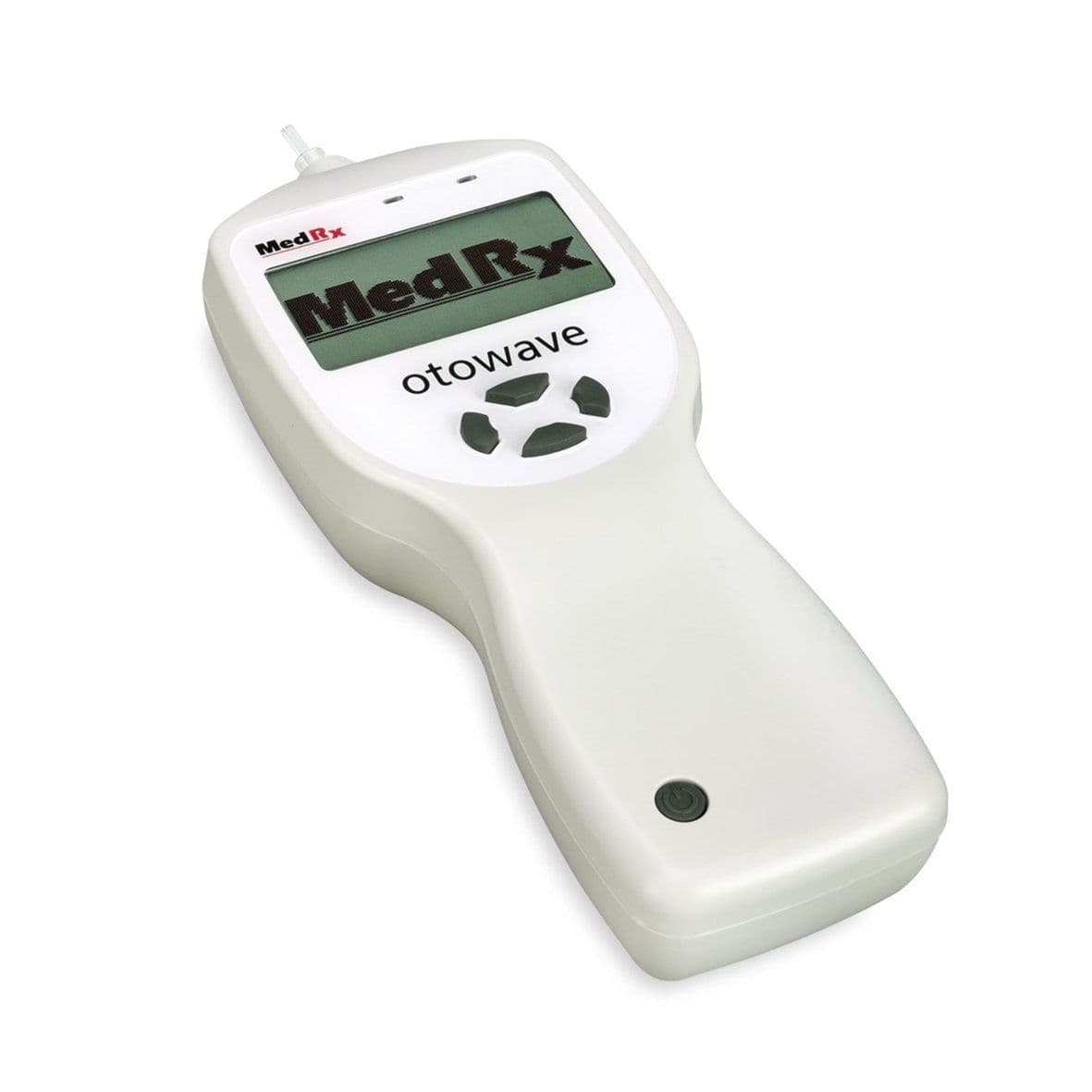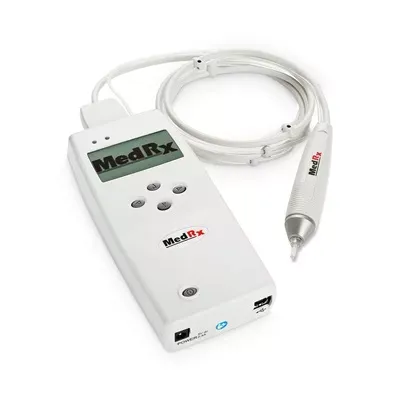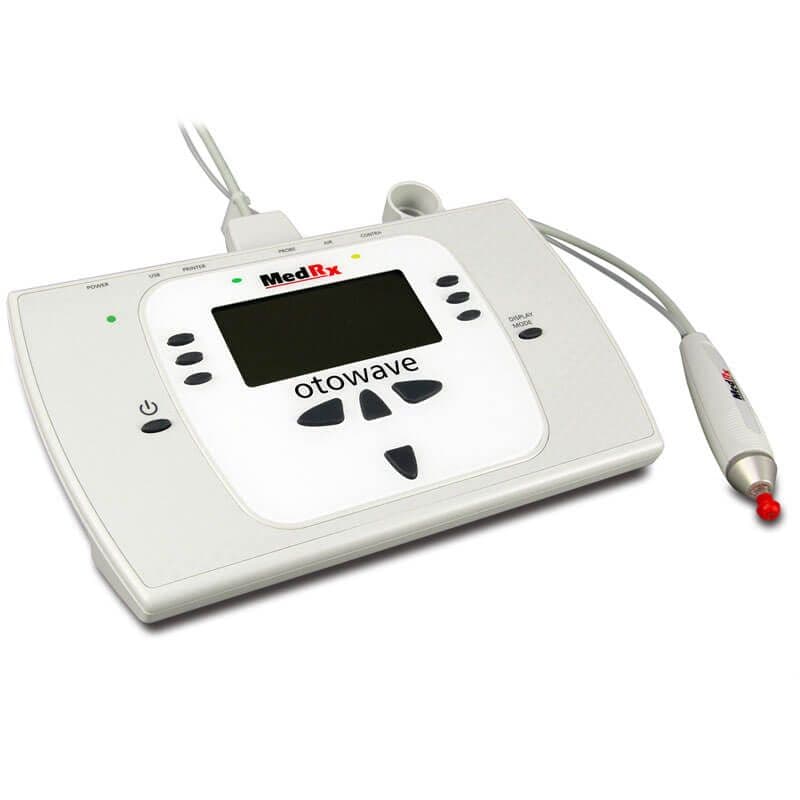MedRx offers 3 models of Tympanometers within the Otowave Line
Optional High Frequency Capability (202H) and Programmable Settings (302+) Available

Fast & Accurate Middle Ear Measurements
MedRx offers 5 portable tympanometers in the Otowave line.
All MedRx Tympanometers feature:
-
Fast, accurate middle ear measurements
-
Programmable 4-Frequency reflex tests
-
PC Interface
-
Noah and MedRx AVANT & Studio compatibility
-
Ergonomic design
-
Lightweight and portable
FAQ
What Is a Tympanometer?
A tympanometer is a diagnostic tool used by hearing care professionals (HCPs) to test the health of the tympanic membrane (ear drum) and middle ear.
A tympanometer usually conducts both tympanometry and acoustic reflex testing.
Tympanometry tests involve blowing small amounts of air at varying pressures against the tympanic membrane to determine its resistance. The ear drum’s response is known as compliance or admittance.
Many tympanometers also conduct acoustic reflex testing, another type of middle ear test used to determine the health and function of a patient’s stapedius muscle. This muscle is responsible for contracting to protect the eardrum when the ear is exposed to loud noises.
Why Use a Tympanometer?
Tympanometers can be used as an additional form of testing to determine why a patient may have hearing loss. They can detect conditions of the middle ear that are difficult or impossible to see with an otoscope.
Some of the conditions tymapnometers can detect are:
• Otitis media (infection of the middle ear)
• Middle-ear effusion (fluid)
• Tears or perforations
• Tumors
• Cholesteatomas (abnormal growth)
• Eustachian tube dysfunction
The tympanometer is an essential tool for many hearing care professionals because it can provide valuable insight to help the HCP develop a personalized treatment plan for the patient or refer them to another physician if necessary.
Who is Qualified to Use a Tympanometer?
Tympanometry and acoustic reflex testing with a tympanometer can only be completed by trained hearing care professionals, including audiologists, ENT (ear, nose, and throat physicians), and trained clinicians.
Tests using a tympanometer may be completed by these professionals in a hospital, clinic, ENT office, or private practice.
How to Use a Tympanometer
The patient is not actively involved in a tympanometer assessment as they would be in an audiometry test. Instead, the patient sits still, making no noise while the clinician runs the test. The clinician will place the probe into the patient’s ear, blocking off sound and air from the patient’s ear canal. Once a firm seal has been established, the clinician will press a button to start the test.
The tests are automatic and generally take less than 5 minutes to complete for both ears. When the tests are complete, the results are recorded on a tympanogram—a visual representation of the ear’s responses to the stimuli. Depending on the ear’s health, a tympanogram will display different line patterns.
Elements of a Tympanometer
Tympanometers are small devices composed of two main elements; a probe and the hardware. On a standard desktop tympanometer, the probe will be connected to the hardware with a cord, allowing it to sit on a desktop and display results on a digital screen.
Many portable tympanometers are handheld, cordless, and operate seamlessly by combining these two elements. This makes for quick and efficient testing ideal for traveling hearing care professionals.
Modern tympanometers are computer-based and allow clinicians to save the results on a PC, while traditional equipment may require the tester to print the results.
References:
Stapedius Muscle - an overview | ScienceDirect Topics
Anatomy and Physiology of the Ear - Health Encyclopedia - University of Rochester Medical Center
Tests of the Middle Ear (asha.org)
Compare Product Features



